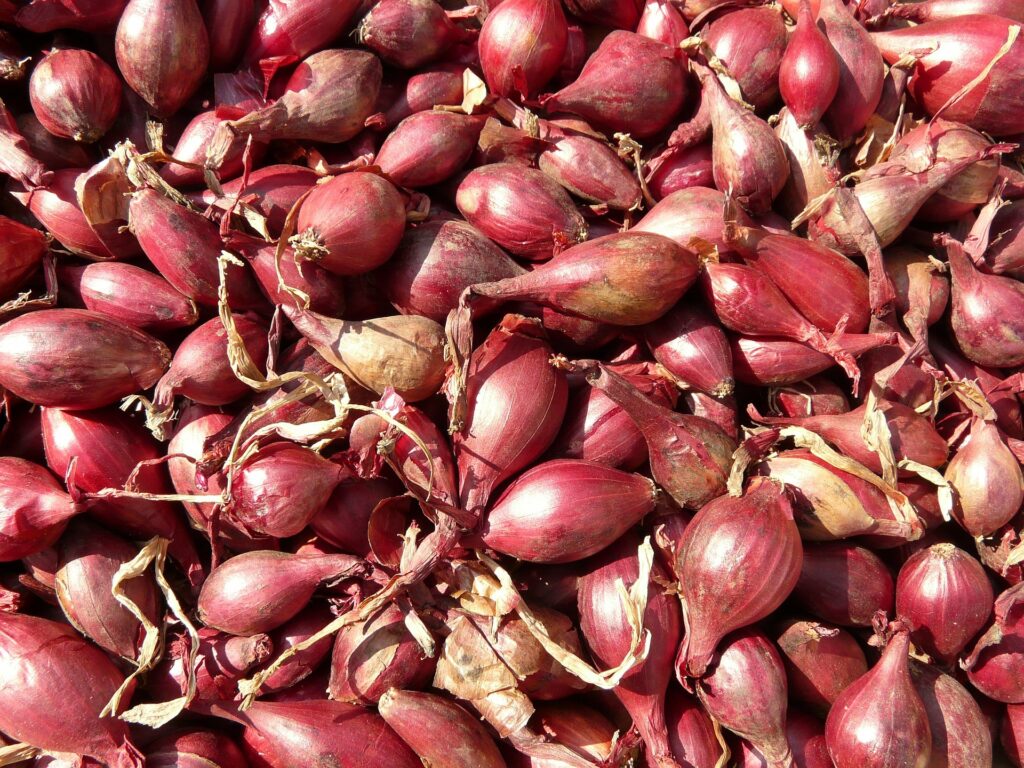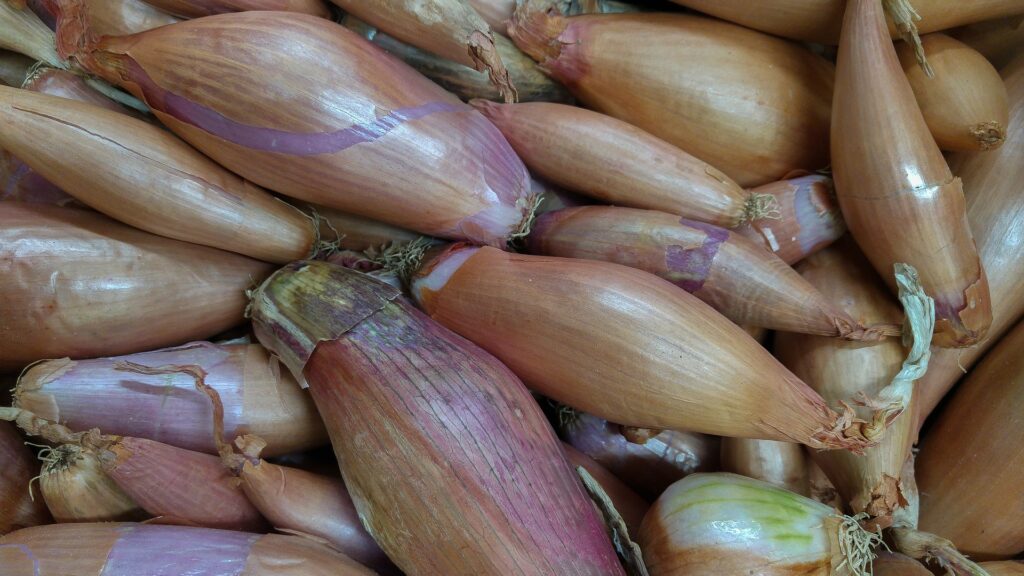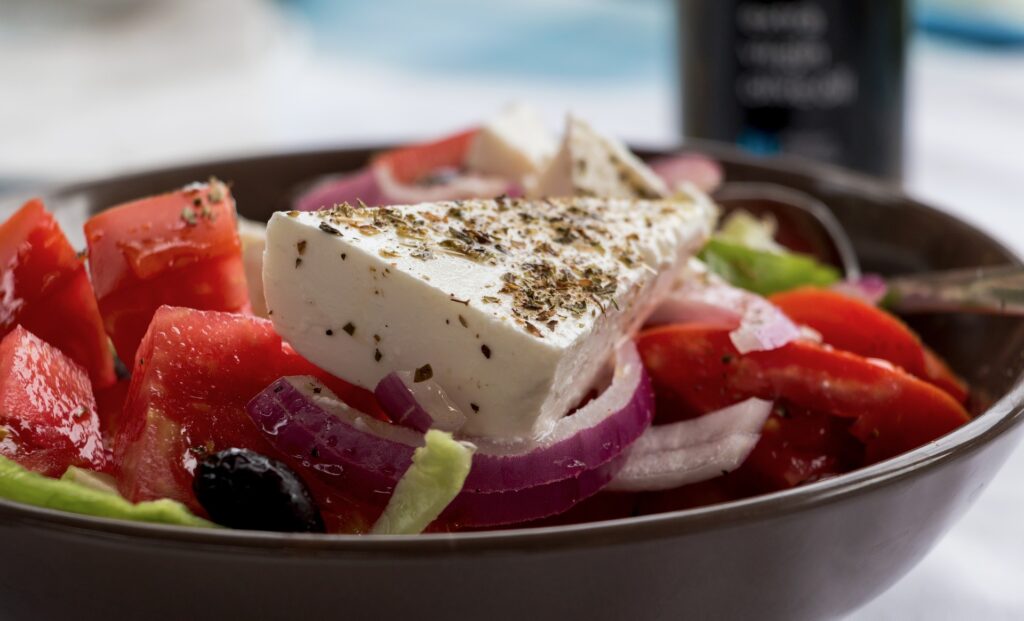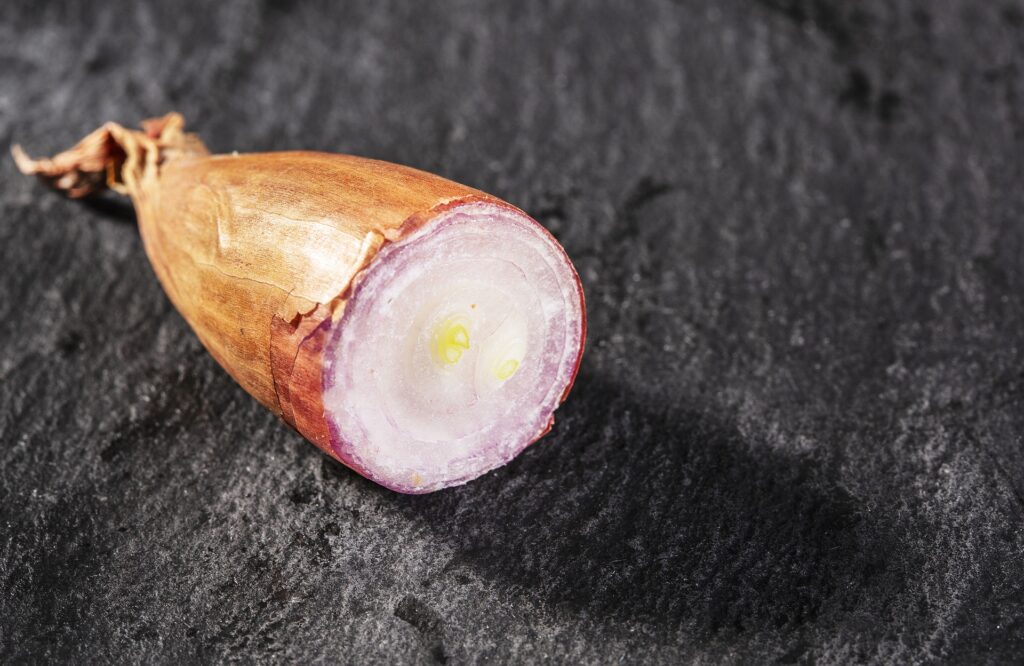One of the most widely asked questions in the culinary world is what are shallots good for? And chances are you’re probably interested to find out the answer to this query, too, if you’re like most people.
For starters, shallots are one of the most interesting gastronomic ingredients available these days. Besides being packed with lots of flavor, their distinct colors and shapes also make them eye-catching. Many culinary buffs around the world consider these vegetables as staples in their specialties.
Whether you’re looking to use shallots in your recipes more often or you’d like to take your know-how on these vegetables up a notch, you’ve come to the right place. Follow along to find out everything you need to know about these deliciously versatile ingredients.
What Exactly are Shallots?

Shallots are vegetables that belong to the plant family of Amaryllidaceae. They are related to onion, leeks, and garlic. Shallots have a flavor profile that is best described as a combination of the tastes of the three.
For example, shallots have the same piquant bite that onions have but it’s milder and much sweeter. Another one is that shallots and garlic have the same pungent aroma when cooked, but the former’s is much gentler on the nostrils.
The term “shallot” is said to be derived from “Askalon,” the name of a place in Israel where this vegetable is believed to have originated. However, modern scientific studies confirm that the ancestors of these versatile culinary flavorings were first propagated in and around the Asian continent.
Are Shallots the Same as Onions?
Just to settle things once and for all, shallots are entirely different from onions. While they may come from the same family and share a lot of similar characteristics, they are distinctly separate from each other.
Interestingly, a lot of people tend to confuse shallots with onions. And it’s easy to understand why given the similar visual characteristics between the two. They taste pretty much the same, too. And they can be impossible to tell apart if you don’t know what to look for.
But that won’t be a problem for you any longer if you just read on.
The Typical Look of Shallots

Shallots generally look like tiny tear-shaped onions. While the yellow and red varieties are the most common ones seen in the produce section, there are many other types grown around the world. There are pink, grey, purple, and even golden varieties.
What’s really awesome about this is that each different type of shallot features a unique texture and flavor. Combining two or more varieties in one dish will give it a multifaceted yet pleasant blend of spice and sweetness.
How Many Types of Shallots Exist?
Worldwide, there are a number of shallot varieties being grown and cultivated. However, there are 8 varieties that are currently deemed as “common.” Chances are you’ve already encountered these during your trip at the grocery store.
Gray. Also known as the Gray Griselle, this shallot variety has a distinctive grayish outer layer that becomes more purple as you get deeper into the bulb. It has a very pronounced elongated shape. Many gourmets and cooking enthusiasts say that this is the most delicious variety of shallot.
Prisma. The shiny red skin and succulent pink flesh of the Prisma are its biggest assets. A lot of people call it the “Red” because of its overall color. Compared to its counterparts, this type of shallot has a more noticeable tangy bite. Its flavor profile makes it the perfect substitute for the onion in some culinary applications.
Pikant. The Pikant is believed to be one of the oldest strains of shallots ever to be cultivated. This variety flaunts a yellowish-brown outer layer and pink flesh. They are very common in countries like France and the Netherlands. This shallot is often deemed as a “rare” variety because it isn’t that visible in most groceries.
Ambition. This type of shallot is renowned for its hardiness and long storage life. The Ambition’s flavor profile is usually described as peppery and sweet at the same time. It has a distinct copper-colored skin that reveals white flesh when opened. It is one of the types of shallots that you can normally find at your local produce section.
Banana. Just as its name suggests, this type of shallot looks like a fat banana. It was first grown in England and its official botanical name is Allium cepa. However, it is unclear which specific onion and shallot varieties were used to create this hybrid. Some countries call this variety the “Echalion.”
Golden Shallot. This shallot variety got its name from the bright golden color that its outer layer flaunts. Sweet notes accentuate its mildly spicy kick. The Dutch developed this variety. One of the most distinct attributes of the Golden Shallot is its ability to stay in shape even after long cooking times. It is ideal for braising, pickling, and making soups.
Jersey. Jersey is the type of shallot that closely resembles the onion as regards to look and taste. Compared to most of its counterparts, it is also more rounded than tear-shaped. Its flesh typically starts purple, but becomes more pink the deeper you go into the bulb. Cooking enthusiasts relate that this shallot variety is the best for roasting for its deep caramelized flavor.
French Shallot. Deemed as the most uncommon of all shallot varieties, this type features an outer layer that gleams gold and brown with a reddish white flesh. This type of shallot is widely cultivated in and around France. Akin to the Jersey, it also has the look of a miniature onion, but has a firmer texture.
How do Shallots Taste?

Perhaps the best way to describe the flavor profile of shallots is that it’s a fusion of all the great things about garlic, onions, and leeks without the strong aftertaste. You are basically getting the sweet spicy punch its cousins are known for minus the unwanted zing in your taste buds a few seconds later.
This is the biggest reason why shallots have become one of the most popular vegetables in the market nowadays. You can think of them as easy to grab substitutes that never fail to deliver when it comes to taste.
Tips on Buying Shallots

There are a few key tips you should keep in mind before you buy shallots at your local grocery store. Besides helping you get the most flavor, the following pointers will also serve as your guide in picking the most ideal options without spending a lot of money:
Go for the ones with the brightest colors.
Shallots have a very mild flavor profile before they reach maturity. This is also the time when the color of their outer layers become very bright and pronounced. If the outer layer is dull, it has already passed this phase and will have a stronger and punchier flavor.
The heavier, the better.
Choose shallots that feel hefty and heavy when you cup them in your hands. This usually signifies a brighter flavor profile. Shallots that are heavy for their size signify that they grew in a nutritious environment. Shallots that are hefty also indicate proper harvesting times. Lighter shallots can be an indication of malnutrition or even deterioration.
Avoid spots of all shapes and sizes.
A shallot should be free of any spots and other blemishes. These unwanted marks are usually signs of deterioration or traces of bugs getting into the bulb. Make sure you only go for the smoothest and shiniest shallots you can find. Eyeballing the shallots is not enough. You will need to get hands on for this one.
Sprouts are a no-no.
If you notice any signs of sprouting on a shallot, make sure you skip that one. Apart from having a flavor profile that could be anywhere from close to bland or excessively strong, it will also deteriorate quickly. The rule of thumb is roots are okay, but sprouts are no way.
What are Shallots Good For?
So now you’ve already learned all the important things you need to know about shallots, let’s get to the portion you’ve been patiently waiting for all this time. What are shallots good for? They are actually good for a lot of things when used in the kitchen.
You’re definitely missing out if you’ve never used these vegetables at least once or twice. There’s still a lot of time to catch up to get in on the shallot action, though. We’ve listed a few of the things you can use these vegetables on for you to try as soon as you finish reading this article:
Salads
With a flavor profile that is more sweet than spicy, shallots are perfect for salads and other raw applications. Preparing shallots for salad is as easy as slicing them thinly. Make sure you don’t slice them too thin or else they will break down easily during tossing. Apart from salads, you can also use these vegetables to prepare ceviche and sushi. Their natural sweetness will heighten the taste of fish and condiments without getting overpowering along the way.
Sauces
If you’re looking to add a bit of zing to your sauces, mixing in minced shallots will do the trick. Apart from making the butter taste creamier, it also easily fuses with other flavors, doing away with the need for constant seasoning. Just keep in mind not to burn the shallots so they won’t lose their mild sweetness and turn bitter.
Soups
Adding in a whole shallot into soups helps boost the taste of vegetables, particularly root crops like potatoes, carrots, and radishes. It also helps remove any gamey smell from beef, venison, and mutton. Just keep in mind that the longer you cook the shallot, the sweeter the taste of the soup will become. Moreover, the soup won’t take on a pungent aroma when it finishes cooking.
Stir-Fry
Raw shallots are mildly sweet and gentle on the taste buds. Remember not to slice these vegetables too thin when used for stir-frying since they will wilt quickly and become soggy. If you are looking for a nice extender for meats, shallots easily take on and complement the taste of pork, chicken, and beef.
Marinades
A marinade infused with shallots has a touch of mild sweetness and spice. Some cooking aficionados keep these vegetables whole when adding them to the marinade and grill them after the meat’s done for a quick but tasty side dish. Make sure you don’t burn them so they’ll retain their mildly sweet yet spicy kick.
Pickles
Shallots are great for pickling since they don’t take long to absorb flavors, particularly those with sour and sweet notes. And just to make things even more awesome, these vegetables also don’t break down easily and become soggy when used whole. There are even cocktails these days that use pickled shallots instead of onions and olives because of their characteristic to hold their shape.
Braised Recipes
If you’re a fan of braising, then shallots are going to be one of your most favorite vegetables. Besides intensifying the flavors of meats and veggies, shallots also add a natural sweetness that artificial flavorings won’t be able to pull off. Moreover, shallots work very well with soy sauce and fermented black beans, which are mainstays in several braising recipes.
Roasts
The next time you’re making your favorite roast, don’t forget to add in a few shallots in the roasting pan 10 minutes before you get it out of the oven. The high temperatures will eventually caramelize the shallots. These vegetables will also absorb the flavors of the meat from the drippings. It’s a win-win situation as soon as you take your first bite.
Dips
Looking to take your favorite dip to a whole new level? Mince half a shallot and mix it in the next time you’re making your go-to dip. Just remember to let the mixture rest for a few minutes so the dip can absorb the shallot flavor properly. You’re also going to be in for a lot of crunch since shallots will remain succulent for a very long time.
